Do you have a question about the Boston Whaler 240 Outrage and is the answer not in the manual?
Explains the foam core construction, materials, and Uni-bond process.
Locates the HIN and explains its importance for vessel correspondence and identification.
Provides contact details for authorized dealers and service support locations.
Details the standard helm, companion seats, and stern fold-away seat configuration.
Covers various optional seating arrangements like leaning posts, cushions, and helm seats.
Describes the 150-gallon aluminum fuel tank's capacity, material, and placement.
Explains the location, marking, and usage of the fuel fill port.
Describes the purpose and placement of the fuel tank vent for pressure release.
Lists components powered by the electrical system and the system's key components.
Provides essential tips for battery care to ensure longevity and prevent damage.
Specifies the location for accessing the boat's standard battery boxes.
Illustrates the wiring for various console components and systems.
Shows the electrical connections related to starting the boat engine.
Details the breaker panel layout, switches, and circuit protection.
Illustrates the electrical wiring throughout the boat's hull structure.
Outlines the correct sequence for safely starting the boat engine(s).
Explains the purpose, operation, and safety features of the ignition shut-down switch.
Explains how to activate and use the freshwater pump for system pressurization.
Provides steps for disinfecting the freshwater tank and lines for safe use.
Covers macerator function, operation, maintenance, and safety considerations.
Explains how to use the shore side discharge for proper waste disposal.
Illustrates the standard waste containment and discharge setup.
Illustrates the optional waste containment and discharge setup.
Outlines EPA regulations regarding overboard discharge of sewage and marine sanitation.
Shows the layout, components, and operation of the bilge pump system.
Explains how to check and add hydraulic fluid to the steering system.
Provides details on the power steering pump, fluid checking, and maintenance.
Explains how to operate the gear shift and throttle control lever for propulsion.
Details the use of the power trim switch for adjusting engine outdrive position.
Illustrates and labels the various parts that make up the propeller assembly.
Provides safety advice, sling recommendations, and methods for lifting the boat.
Explains the causes, effects, and prevention methods for hull blisters.
Provides advice on painting the hull to prevent blisters and control fouling.
Covers annual inspection, cleaning, and maintenance for the painted hull bottom.
Tips for keeping vinyl cushions supple, clean, and preventing mildew.
Provides guidance on preparing the boat and its systems for extended non-usage.
Highlights safety features like chains and straps for securing the boat to the trailer.
Defines common terms and components related to bunk trailers.
Provides steps and safety advice for safely deploying the anchor.
Explains methods for properly setting the anchor to ensure it digs in.
Details the steps for safely raising the anchor from the seabed.
Explains the foam core construction, materials, and Uni-bond process.
Locates the HIN and explains its importance for vessel correspondence and identification.
Provides contact details for authorized dealers and service support locations.
Details the standard helm, companion seats, and stern fold-away seat configuration.
Covers various optional seating arrangements like leaning posts, cushions, and helm seats.
Describes the 150-gallon aluminum fuel tank's capacity, material, and placement.
Explains the location, marking, and usage of the fuel fill port.
Describes the purpose and placement of the fuel tank vent for pressure release.
Lists components powered by the electrical system and the system's key components.
Provides essential tips for battery care to ensure longevity and prevent damage.
Specifies the location for accessing the boat's standard battery boxes.
Illustrates the wiring for various console components and systems.
Shows the electrical connections related to starting the boat engine.
Details the breaker panel layout, switches, and circuit protection.
Illustrates the electrical wiring throughout the boat's hull structure.
Outlines the correct sequence for safely starting the boat engine(s).
Explains the purpose, operation, and safety features of the ignition shut-down switch.
Explains how to activate and use the freshwater pump for system pressurization.
Provides steps for disinfecting the freshwater tank and lines for safe use.
Covers macerator function, operation, maintenance, and safety considerations.
Explains how to use the shore side discharge for proper waste disposal.
Illustrates the standard waste containment and discharge setup.
Illustrates the optional waste containment and discharge setup.
Outlines EPA regulations regarding overboard discharge of sewage and marine sanitation.
Shows the layout, components, and operation of the bilge pump system.
Explains how to check and add hydraulic fluid to the steering system.
Provides details on the power steering pump, fluid checking, and maintenance.
Explains how to operate the gear shift and throttle control lever for propulsion.
Details the use of the power trim switch for adjusting engine outdrive position.
Illustrates and labels the various parts that make up the propeller assembly.
Provides safety advice, sling recommendations, and methods for lifting the boat.
Explains the causes, effects, and prevention methods for hull blisters.
Provides advice on painting the hull to prevent blisters and control fouling.
Covers annual inspection, cleaning, and maintenance for the painted hull bottom.
Tips for keeping vinyl cushions supple, clean, and preventing mildew.
Provides guidance on preparing the boat and its systems for extended non-usage.
Highlights safety features like chains and straps for securing the boat to the trailer.
Defines common terms and components related to bunk trailers.
Provides steps and safety advice for safely deploying the anchor.
Explains methods for properly setting the anchor to ensure it digs in.
Details the steps for safely raising the anchor from the seabed.
| Beam | 8' 6" |
|---|---|
| Draft | 18 in |
| Maximum Horsepower | 400 hp |
| Passenger Capacity | 11 |
| Deadrise at Transom | 20 degrees |
| Length Overall | 24 ft |

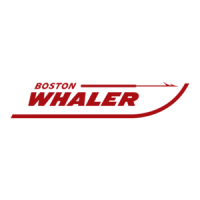
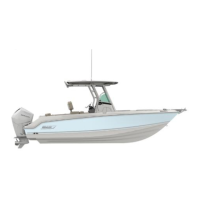




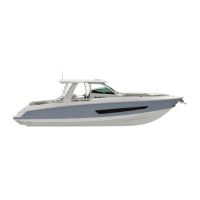
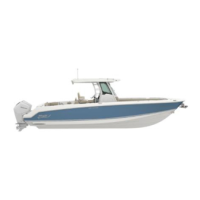
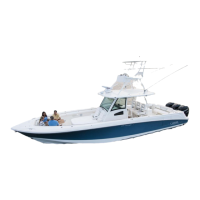


